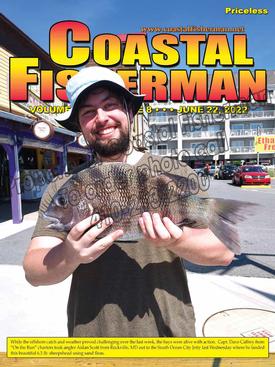


Article by Capt. Steve Katz
 More Than Just Water
More Than Just Water
When boaters talk about water there are many variations: fresh, sea, black, grey, potable, bilge….
What is Potable Water? Potable water is clean water that comes from your faucet or shower that you can safely drink or use for food preparation. There is a wide variation of what people consider as clean water. The United Nations reports that “Every year, more people die from unsafe water than from all forms of violence, including war.”
While this may not be a major problem here in the USA, it reminds us how important clean water is.
What is Greywater?
Gray water is a type of water that is used and traveled through of shower drains, sink drains, laundry machine drains, the dishwasher drain, condensate drain etc.
What is Black Water?
Black water is water that has encountered human waste, particularly fecal matter. Blackwater contains bacteria and other harmful contaminants.
What is Bilge Water?
Bilge water is not just water but a mixture of a variety of substances. It is a mixture of fresh water, sea water, oil, sludge, chemicals, and various other fluids. Most modern boats have individual systems that accommodate these types of water and contain, treat and manage these sources.
Boaters seem to focus on “clean water” or potable water. A short walk down the dock at most marinas will allow you to see a wide range of pre-treatment systems for dockside water that boaters have chosen to use to improve their fresh water supply. Many boaters use water from the garden hose at their marina without any regard to the quality, hoping someone else monitors and evaluates the water quality.
Depending on the source of the water, it may have naturally occurring or added minerals and chemicals that are not desirable to use on or in a boat. For example - water with high iron content can leave brownish stains or discolorations on surfaces. This may not be immediately noticeable, but over time this may become apparent. On Maryland’s eastern shore, well water can contain arsenic, a naturally occurring underground element. Hard water with a high mineral content and high TDS (Total Dissolved Solids) often contains naturally occurring calcium and magnesium picked up naturally as the water moves through the earth. At home and on boat, hard water interferes with every cleaning task from laundering and dishwashing to bathing and personal grooming.
The most important aspect of investigating your water quality is to measure your water before and after any treatment system by analytical means. There are numerous water testing kits, tools, and services available. A simple TDS water test meter is about $20 but does not evaluate for chemicals or bacteria.
What can you do to get the best fresh water for your boat? Install a watermaker! A reverse osmosis (RO) watermaker produces fresh water by pressurizing ocean saltwater to around 800psi and forcing it through a semipermeable membrane. Water molecules pass through the membranes, but most minerals and salts are left behind and discharged back to the sea. The resulting RO water is some of the cleanest water on the planet since it is made from sources far away from population centers and pollution. A properly functioning watermaker will produce water with a minimum of 500PPM of TDS but often as low as 100 PPM or less and can optionally remove bacteria with an add-on treatment system.
If a watermaker is out of the question, what else can I do to improve the fresh water for my boat? You could install a RO (reverse osmosis) system to process the public fresh water supply or even additionally process watermaker water. NOTE: A RO system for fresh water uses different membranes that tolerate chlorine, a chemical that will ruin traditional saltwater RO systems. The Dometic Spot Zero is a popular freshwater RO system, mounted in the boat or dockside and designed for the marine environment. The Spot Zero system can output water with less than 20 PPM TDS (total dissolved solids) and often into the single digits of TDS. Water spots on surfaces are a result of minerals left behind after the water dries or evaporates. As you may have realized, water without any solids is almost 100% H2O. When this low PPM water dries or evaporates, it does not leave behind the dreaded water spots, since there are no minerals to leave behind!
A less expensive dockside system is a “water softener” to help improve the “feeling” of the water and improve the ability to make soapy water (hard water does not allow soap to foam with lots of bubbles). Many people believe a water softener will reduce or remove solids – it does not. A water softener helps make the water “feel” better by exchanging ions; minerals are simply exchanged for other minerals, leaving total TDS levels constant. The “Wet Spot” marine portable water softener is the most popular product in this category and works as advertised.
If you just want to remove an unpleasant smell or taste of dockside water, a carbon filter can “purify” city water to help reduce any odor and filter out larger solids in the water though with only a very slight reduction in TDS.
While most potable public water supplies in the USA are acceptable for drinking and bathing, that same water may not be the best water for use and maintenance of your boat. If you desire upgraded water, there are numerous treatment systems available, with a wide range of price points that are specifically made for use in the marine environment.§